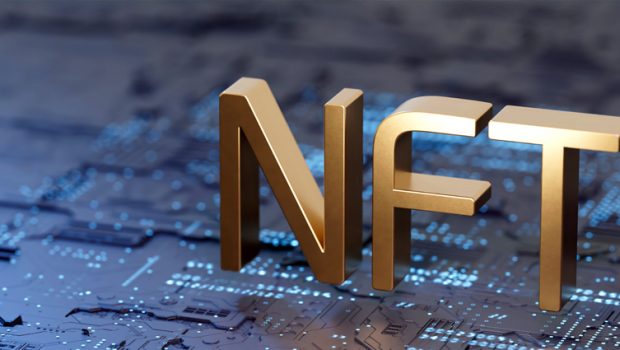A Guide to Comparing NFT Technology Essentials in 2022
There’s no denying NFTs (Non-Fungible Tokens) are exploding in popularity these days. The NFT market grew to an incredible value of $41 billion in 2021, and estimates believe this value will double in the next few years.
No doubt, as concepts like Web 3.0 and the metaverse continue to accelerate interest in the blockchain and NFT landscape, opportunities will continue to grow.
For anyone interested in the NFT market right now, there are two primary ways to get involved. The first, and most obvious option is essentially to build an NFT portfolio of your own, collecting investment opportunities on the blockchain.
On the other hand, you can look into opportunities for creating and distributing your own Non-Fungible Tokens.
If you’re planning on exploring the latter route, then you’re going to need to consider the right NFT technology essentials to make your strategy a success.
Step 1: Pick the Digital Asset
The first step in developing NFTs for your business or enterprise is deciding what kind of digital assets you want to make into a non-fungible token.
The great thing about this evolving landscape is that virtually anything can be transformed into an NFT, from a meme to a piece of art, a video game collectible, or a specific service contract.
Comparing your NFT technology means thinking carefully about how you’re going to use NFTs in your business or venture. Do you want to give people visiting your webinars and NFTs access to these experiences through NFTs rather than using digital tickets? Or are you creating NFTs to help define specific contracts with customers.
Make sure you have the intellectual property rights to anything you want to turn into an NFT, and make sure you think about how you’re going to make that token valuable. The exact value of your NFTs also needs to be outlined as quickly as possible. What will owning a certain NFT mean to your target customer?
Step 2: Consider Design Requirements
Knowing what kind of NFT you’re going to create will give you a good insight into the design or graphical requirements you’re going to have too.
Some people create NFTs for a very small budget, using freelance designers on sites like Fiverr. Others hire specialists capable of creating comprehensive NFT experiences which can be accessed in the XR world.
The kind of NFT you design will depend on what you want to accomplish with this technology. If you’re creating NFTs to offer customers as part of a comprehensive metaverse experience, then it makes sense you’d want to work with professionals who have experience creating immersive content.
Alternatively, if you’re simply designing NFT assets which might give your customers access to a specific exclusive webinar or event, you can always stick to something simpler.
Step 3: Explore the Blockchains
While there are many different kinds of “NFT” technology for creators and business owners to consider when moving into this new landscape, few things are more important than the blockchain. The blockchain is the underlying technology behind non-fungible tokens, and it’s set to reach a value of $1,431.54 billion by 2030.
While there are NFT startups and innovators on the market creating their own blockchains today, most business leaders won’t be able to take this route without extensive technical knowledge or a gigantic budget. With that in mind, it’s often easier to explore the blockchain options already available.
The most common blockchain used by NFT artists and creators at this time is Ethereum, but people are rapidly beginning to search for alternative blockchains based on the large fees associated with transferring content through the ETH blockchain. Alternative options include Tezos, Cosmos, and even the Binance Smart Chain.
Step 4: Explore the NFT Marketplaces
Not every business or creator investing in the development of NFT technologies will need to list their assets on a marketplace. However, there’s a good chance many businesses will want to expand their brand awareness and add to the value of their assets this way.
Selecting the NFT marketplaces you’re going to be working with carefully is crucial, because it determines what kind of customers you might attract, and what kind of investors may see your work.
Conduct extensive research into the leading NFT marketplaces, from OpenSea and Larva Labs, to SuperRare, to find something suitable for your NFT strategy.
For instance, the NBA Top shot marketplace is the most common place for basketball-focused NFTs. Some marketplaces also require their own specific kinds of cryptocurrencies.
If you want your NFTs to have value as a collectible asset, placing them on the right NFT marketplace will be a critical first step. A good way to improve your chances of success is to research your current customers, and your competitors, to see what kind of marketplaces they’re already using.
Step 5: Do Your Due Diligence
NFTs are a complex new concept in the digital world, which means there are a lot of potential hurdles and challenges which could trip you up on your path to success.
For instance, building your NFTs on an older blockchain could mean your NFTs risk losing their value if the chain is exposed to “forking”. Lack of smart contracts and bug-free code could also make your NFT packages almost worthless.
When determining which marketplaces to list your NFTs on, what kind of blockchain technology to use, and even which developers to work with, it’s important to do your due diligence. Just because NFTs are widely regarded as being secure and efficient tools for the transfer of value, doesn’t mean they can’t be exposed to a variety of risks.
For instance, blockchains can be vulnerable to various attack vendors like man-in-the-middle attacks. Searching for platforms with high levels of security and mining-free consensus mechanisms like proof of stake is often crucial.
Getting involved in the NFT marketplace is likely to be a complex process for most beginners, but it could be worth it as the Web 3.0 landscape grows increasingly crucial.








Gloss